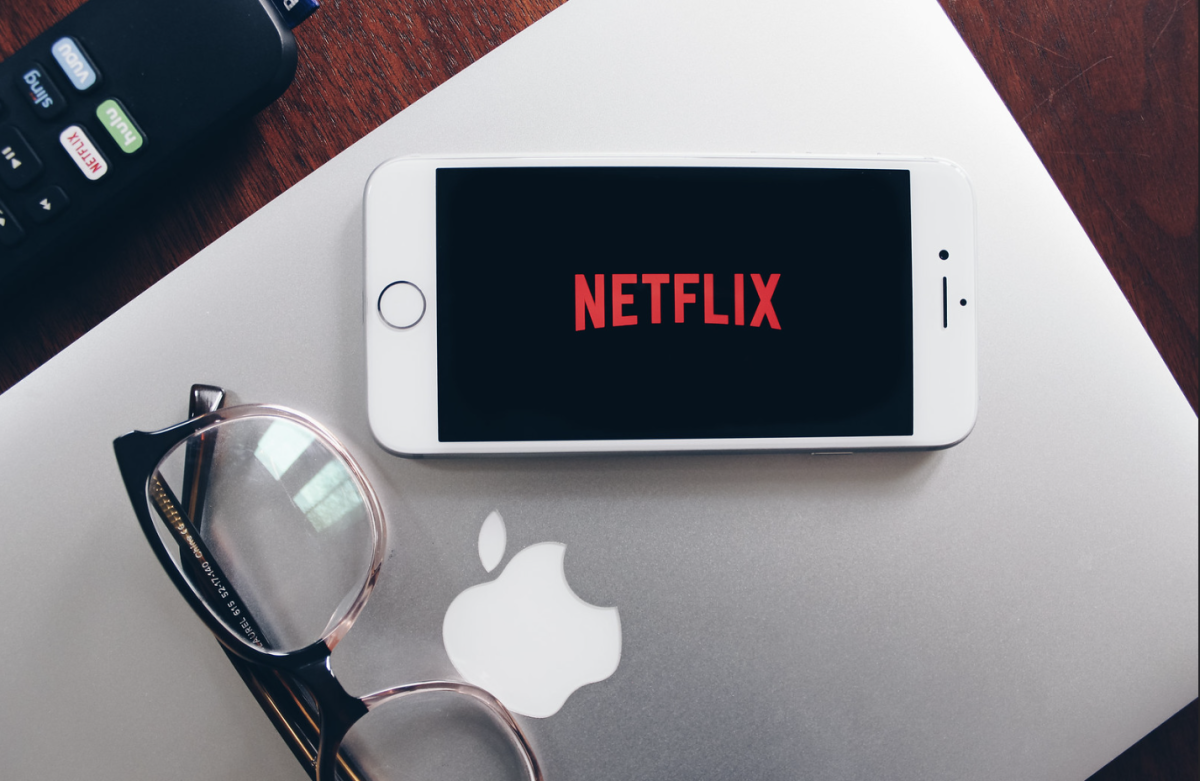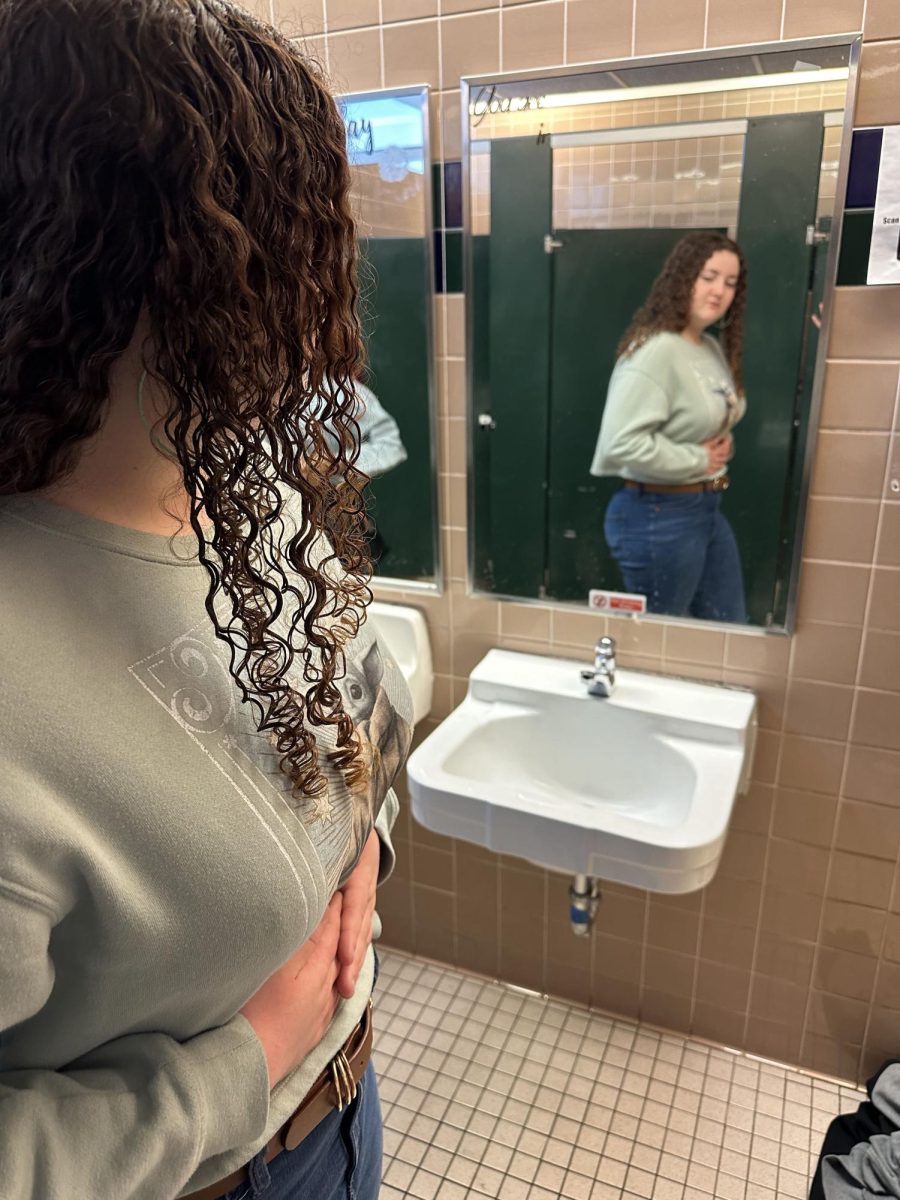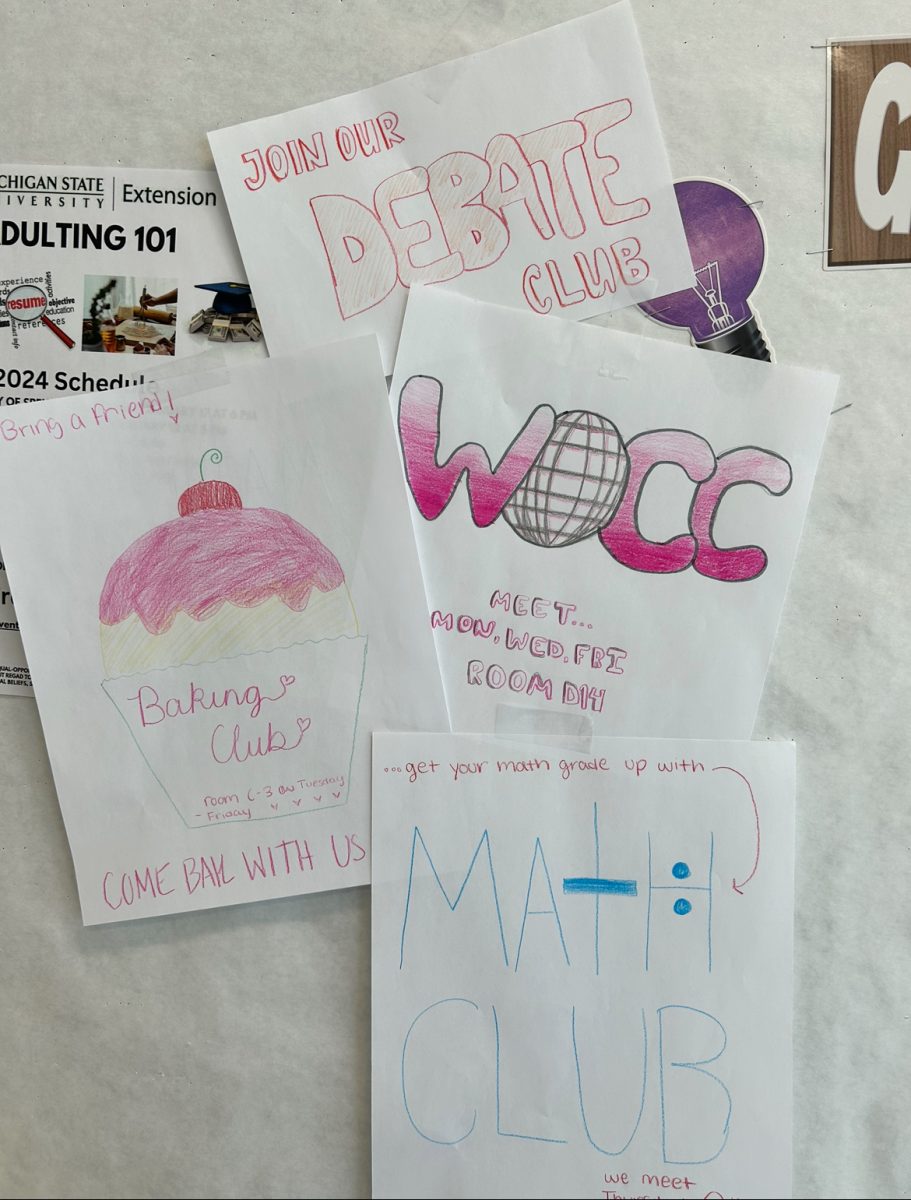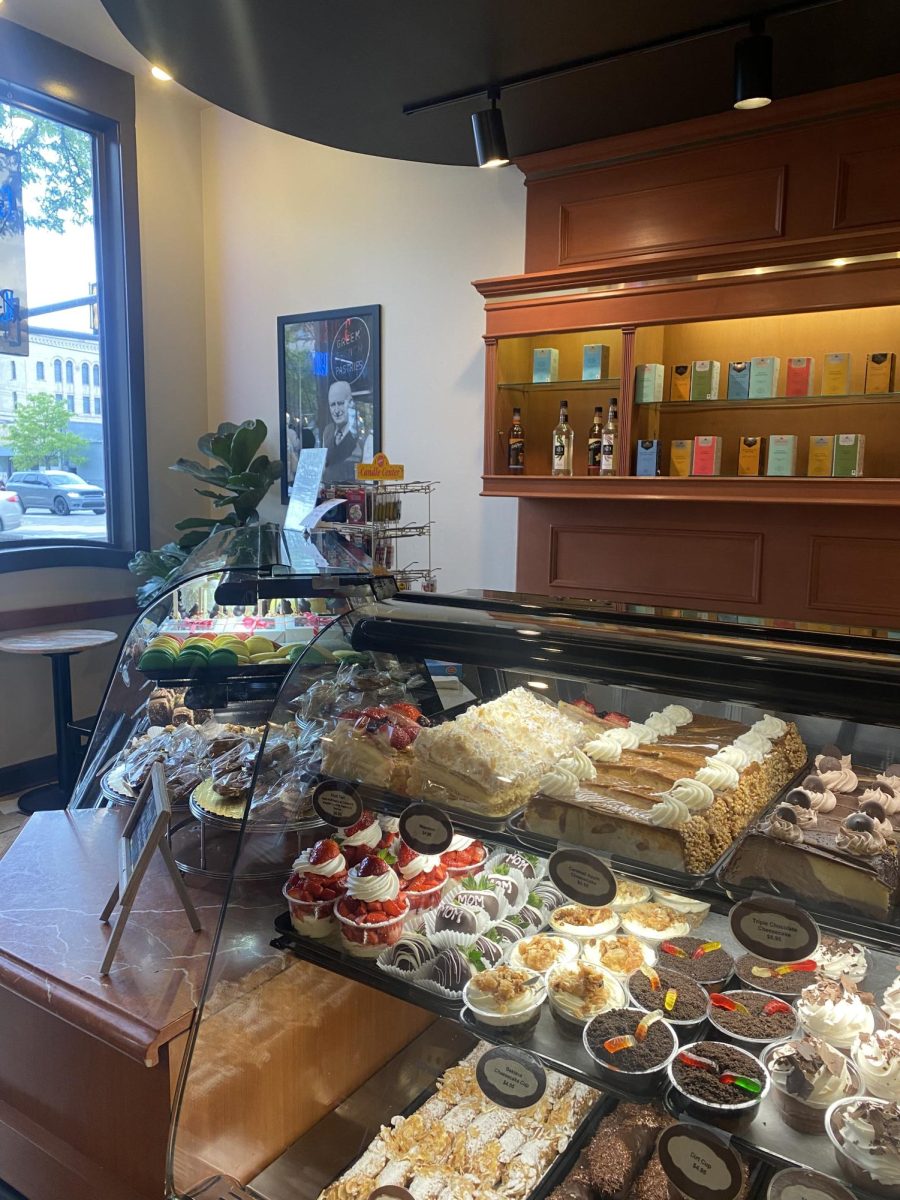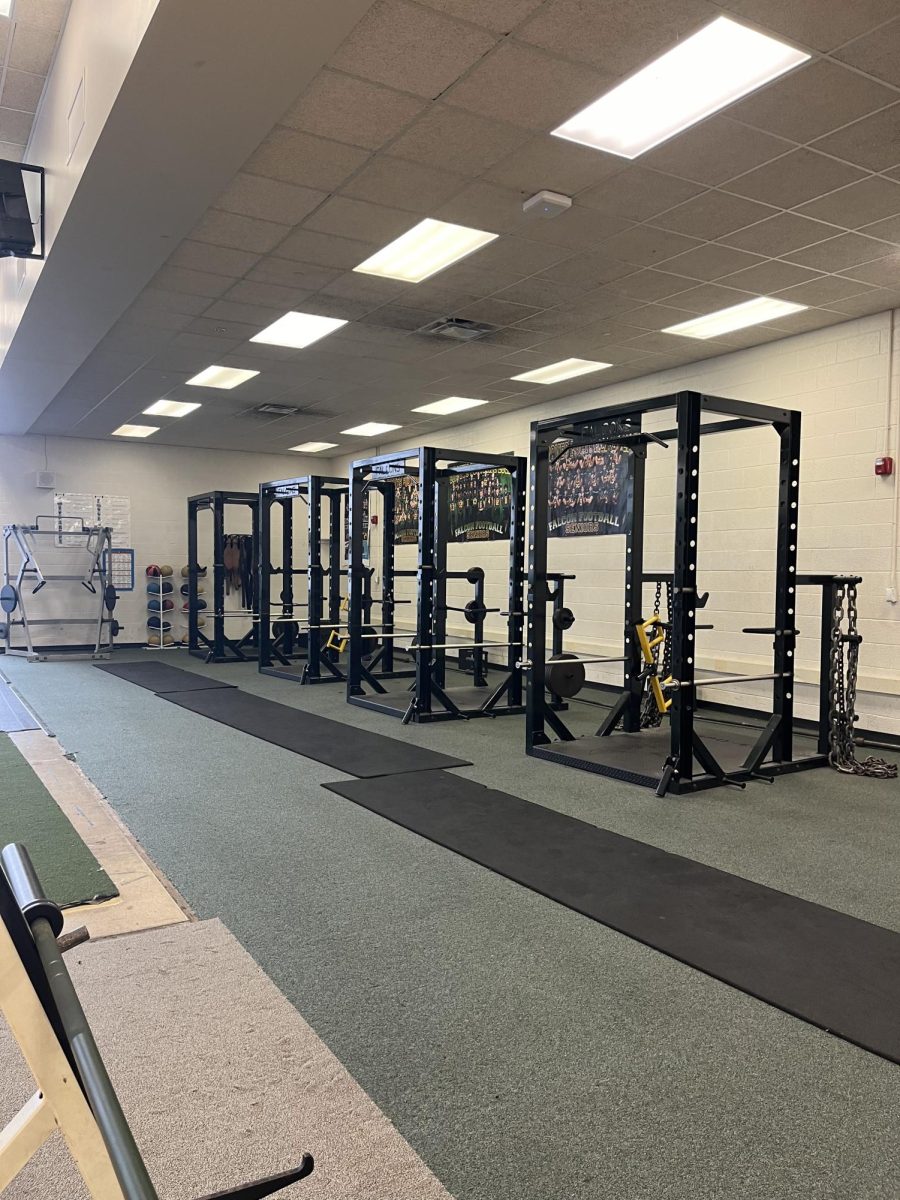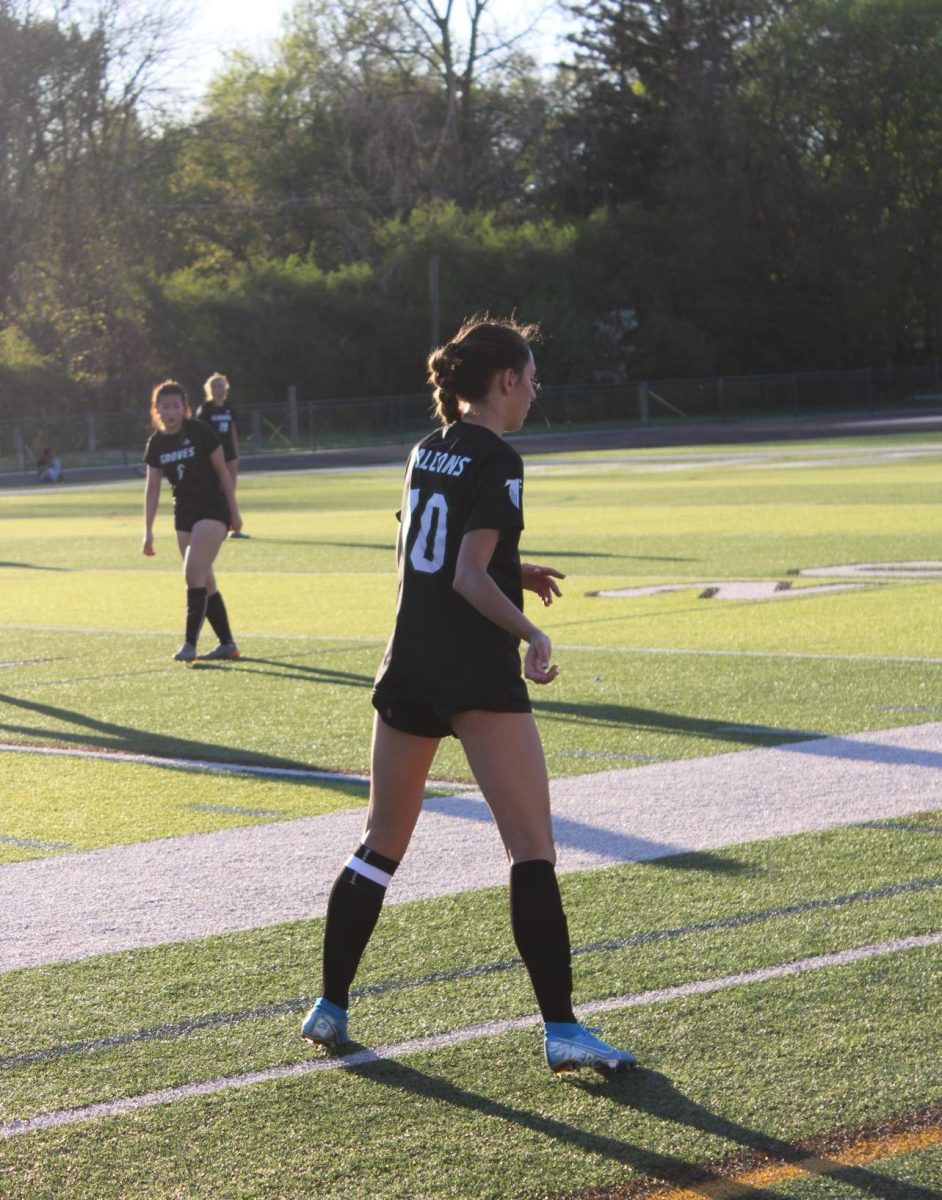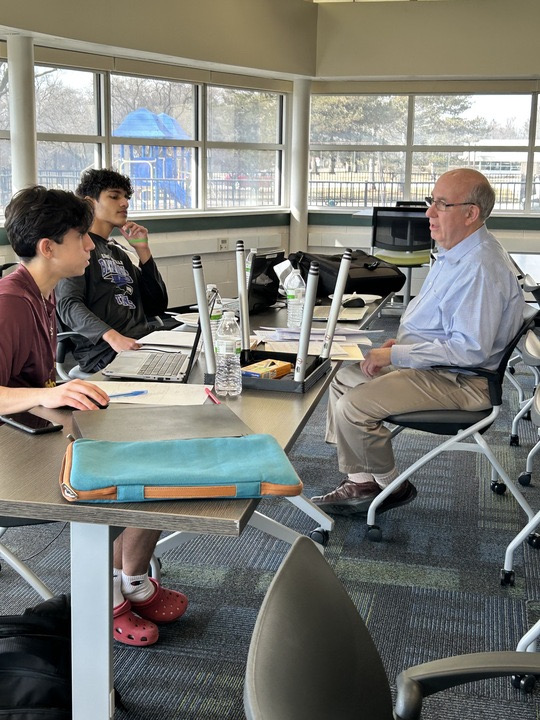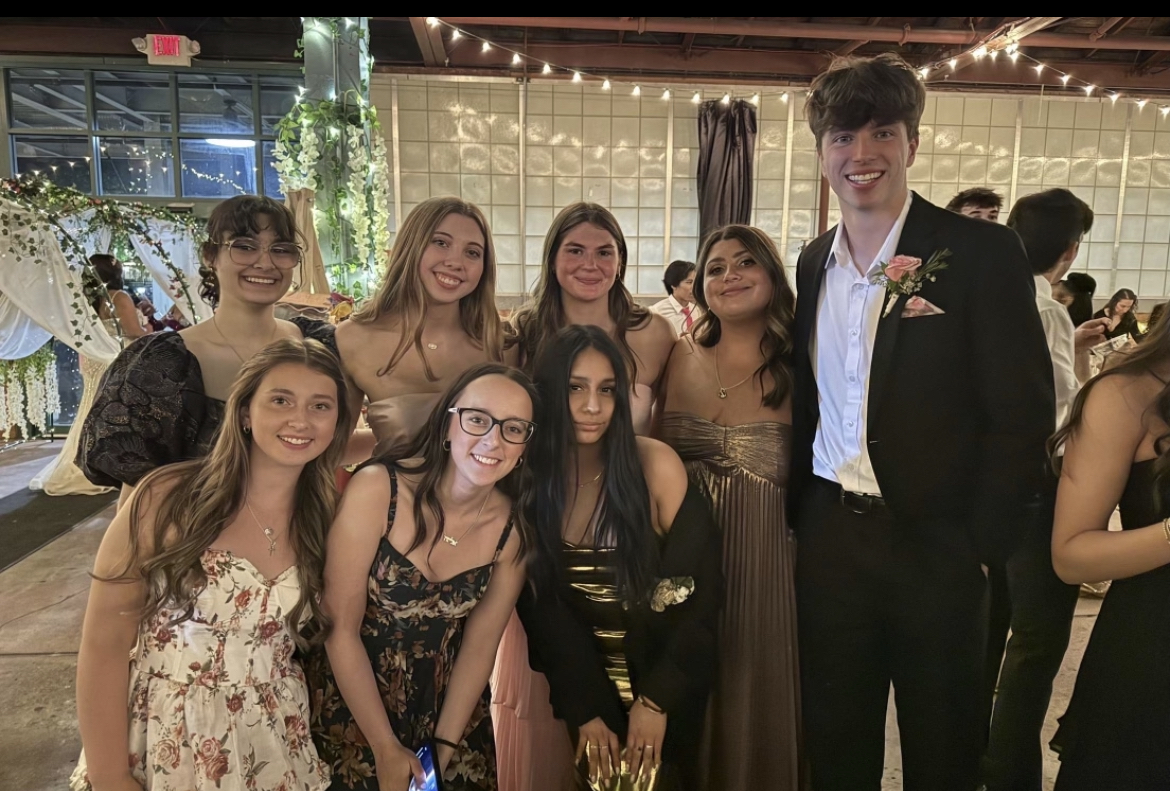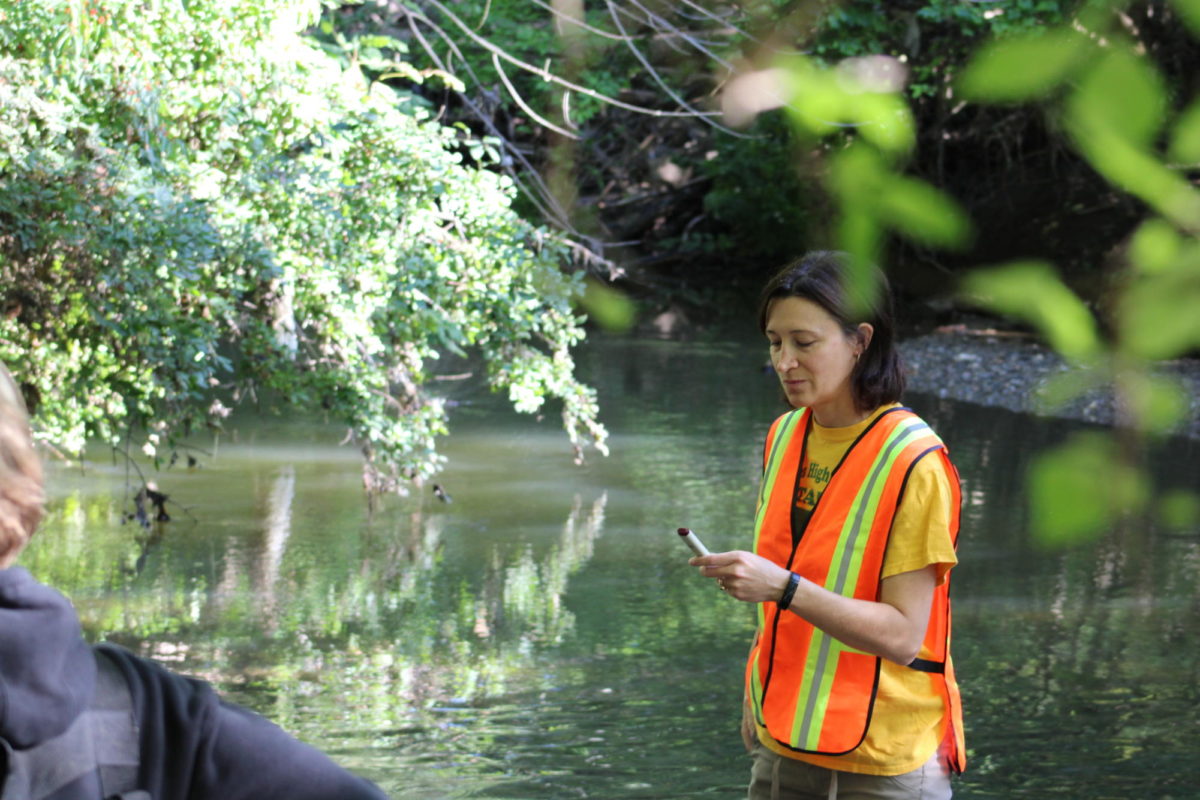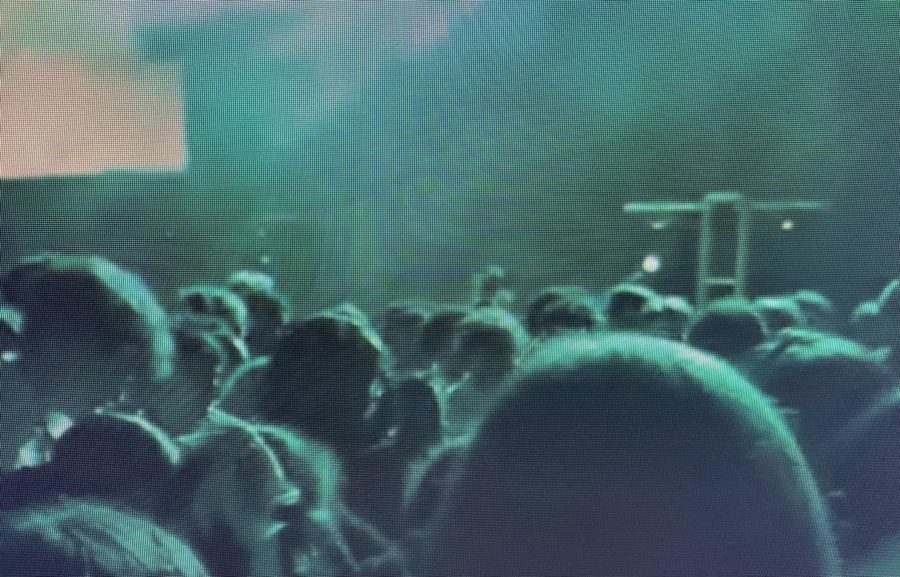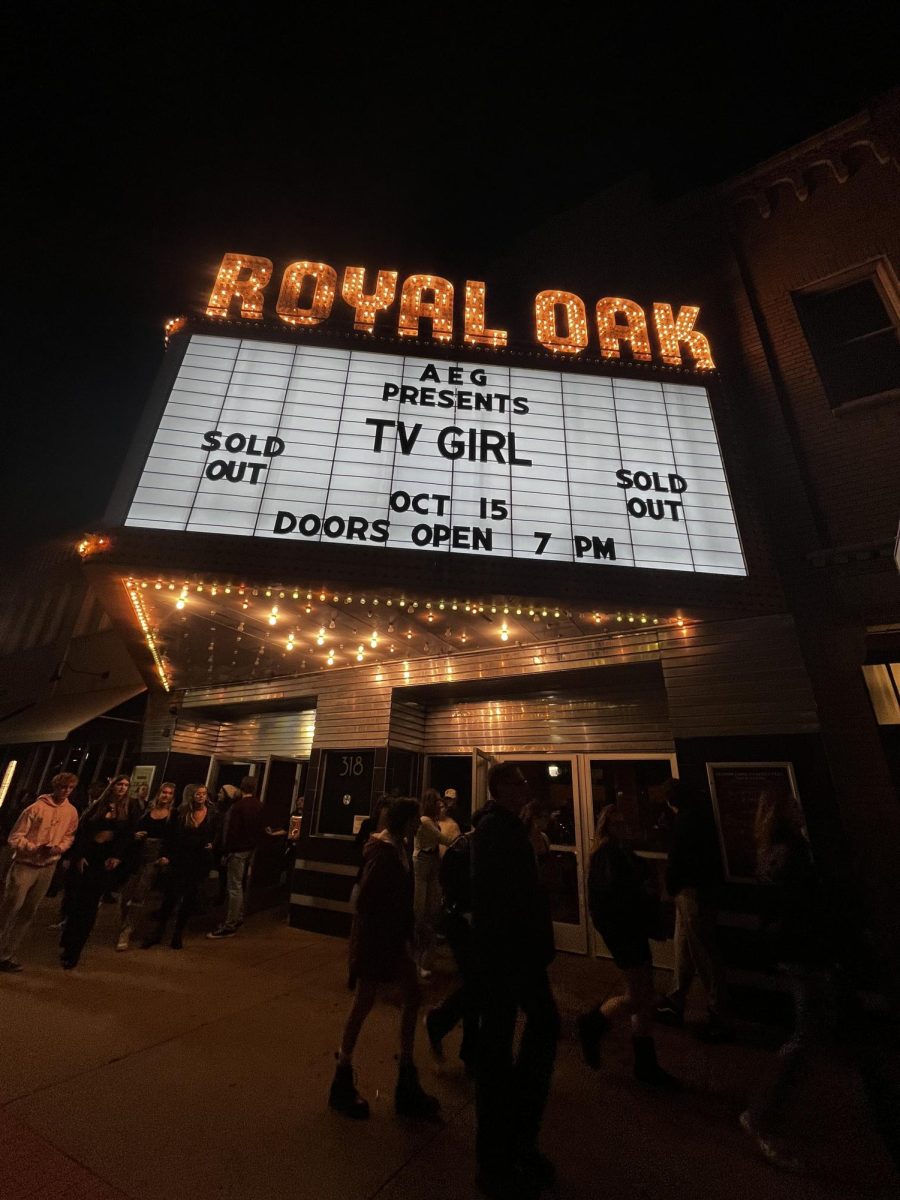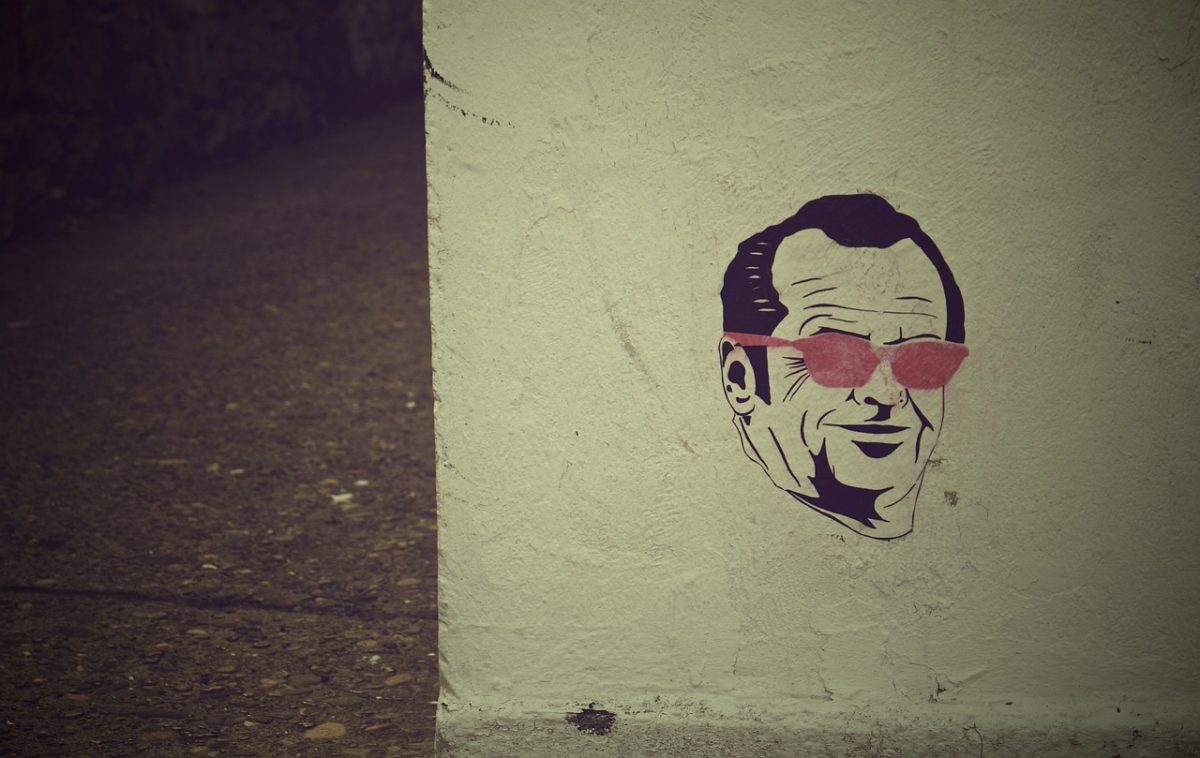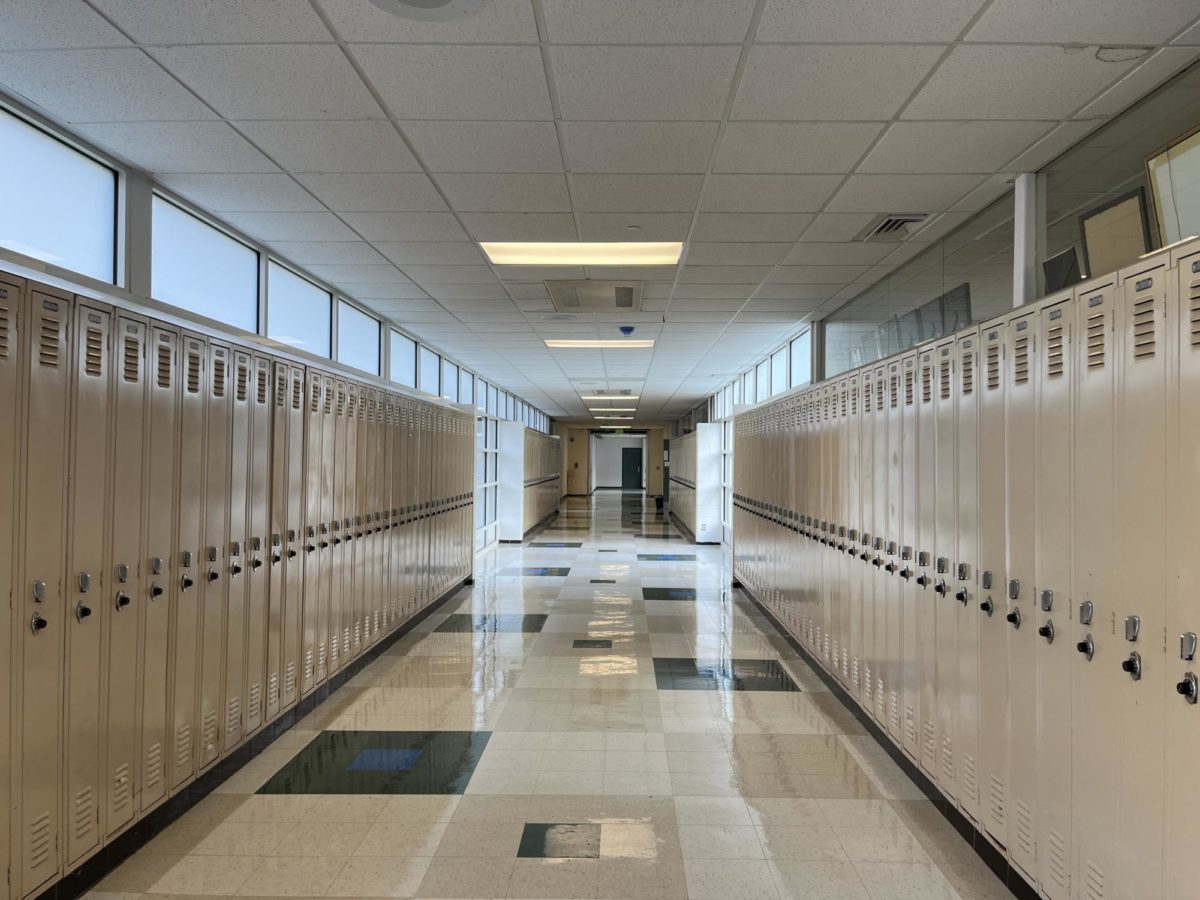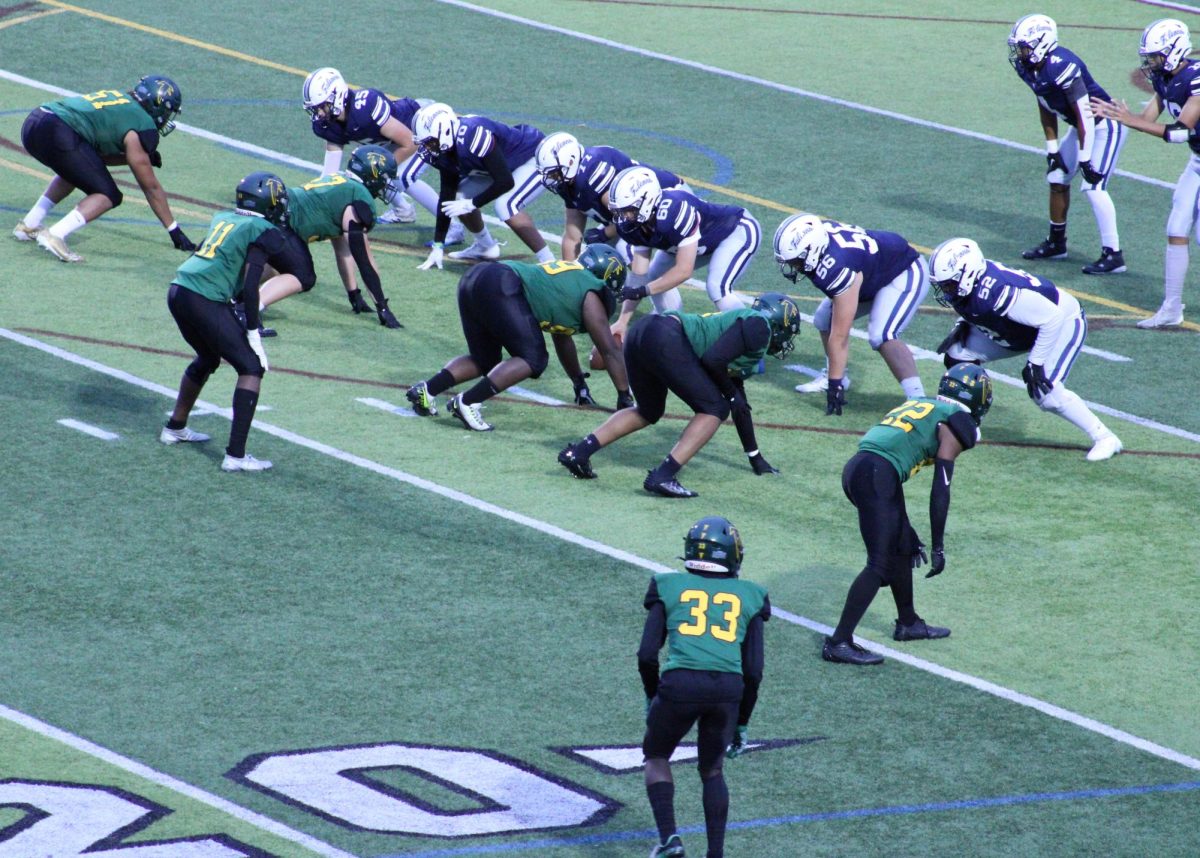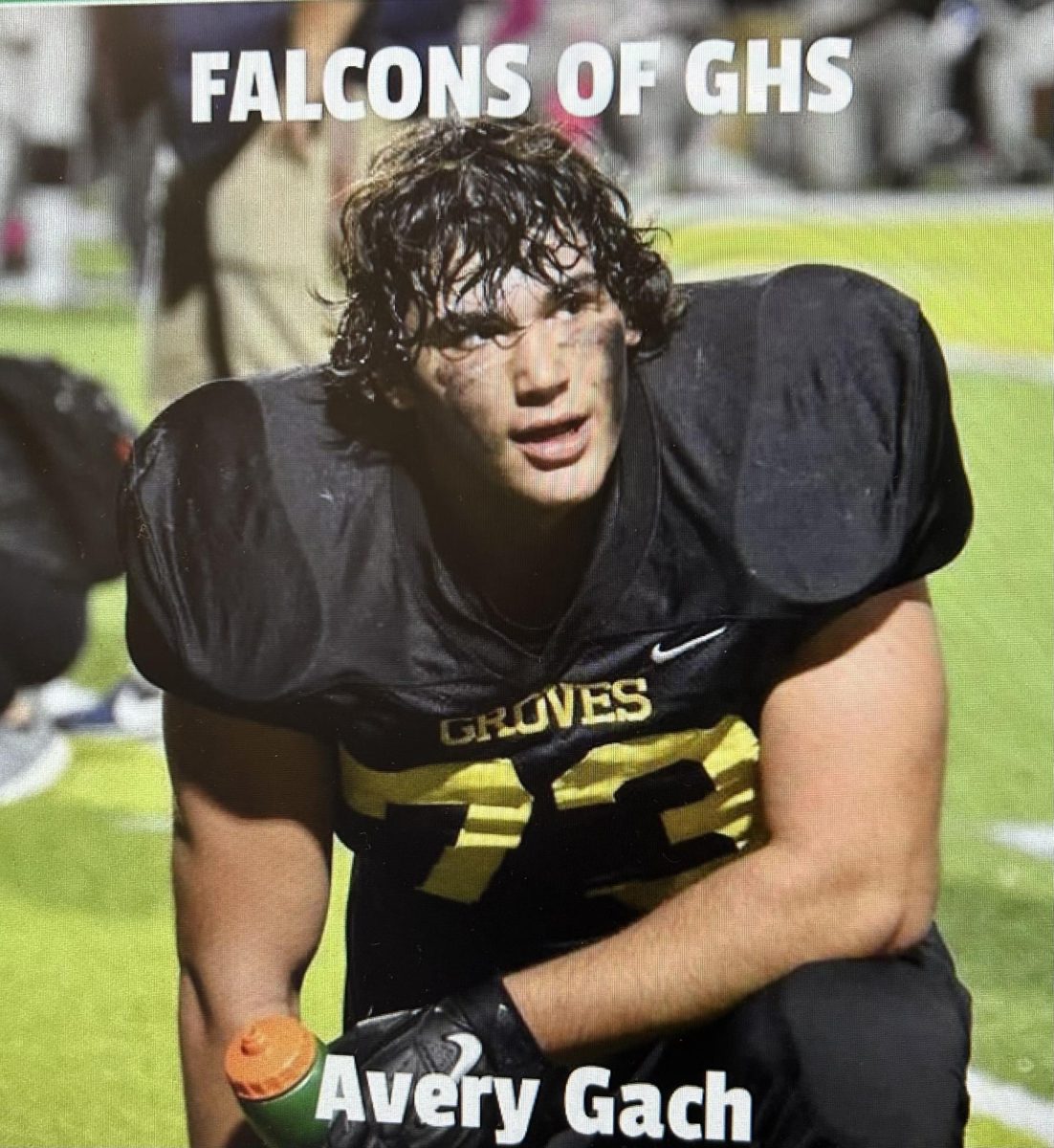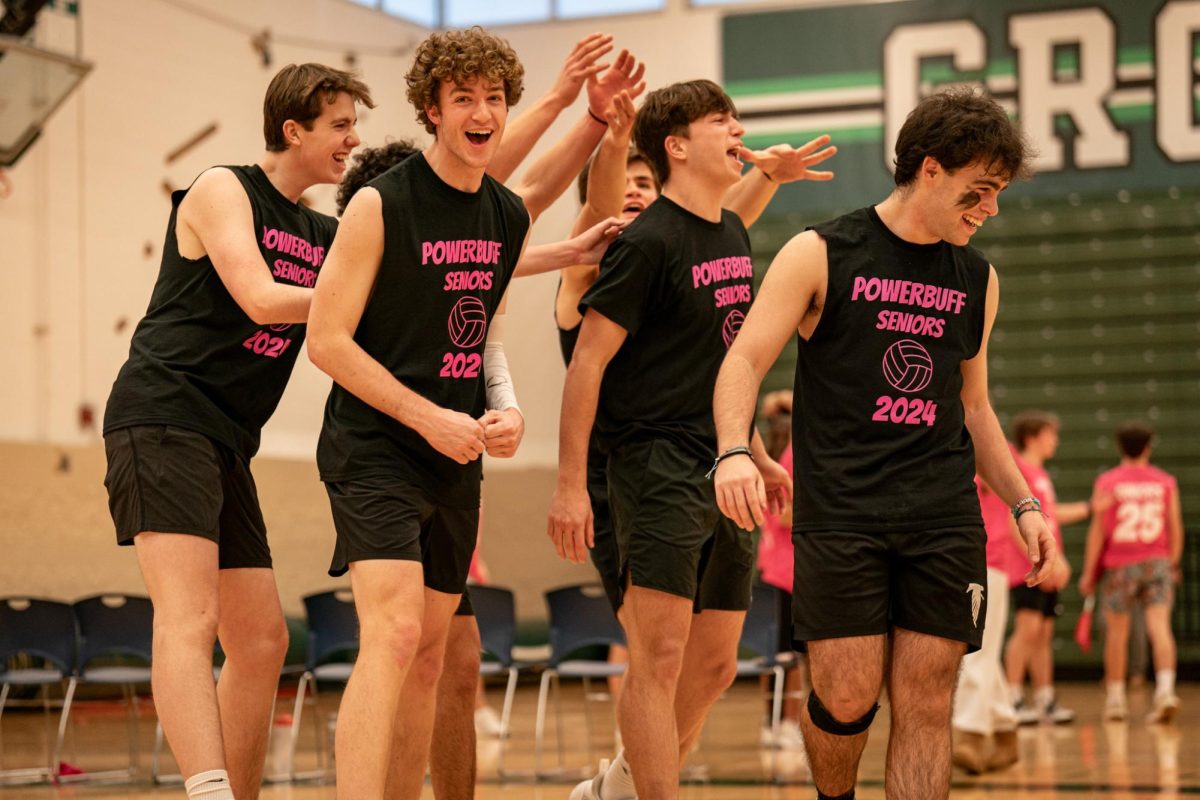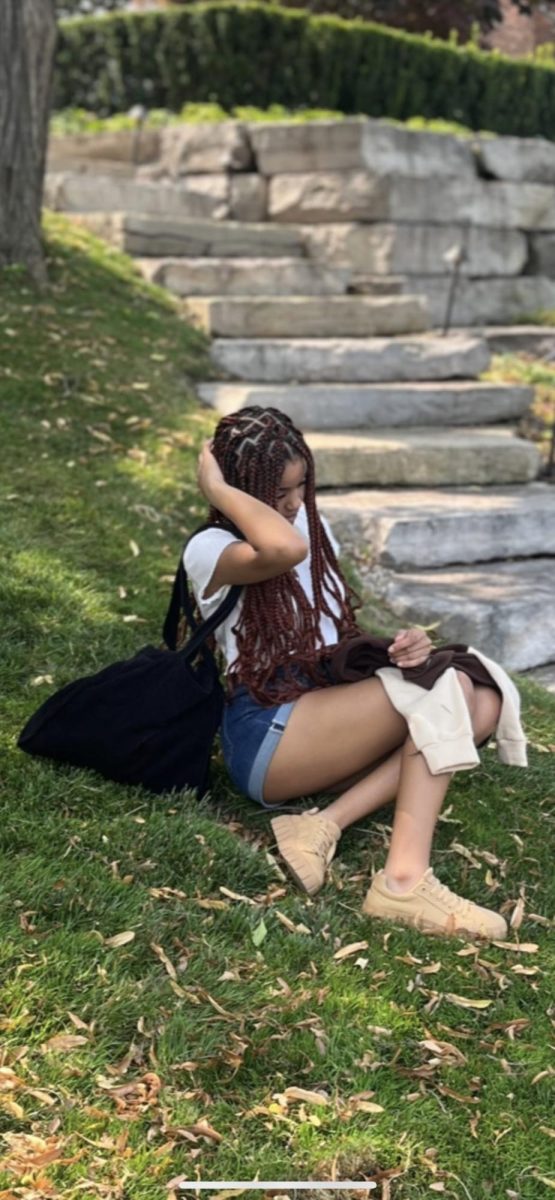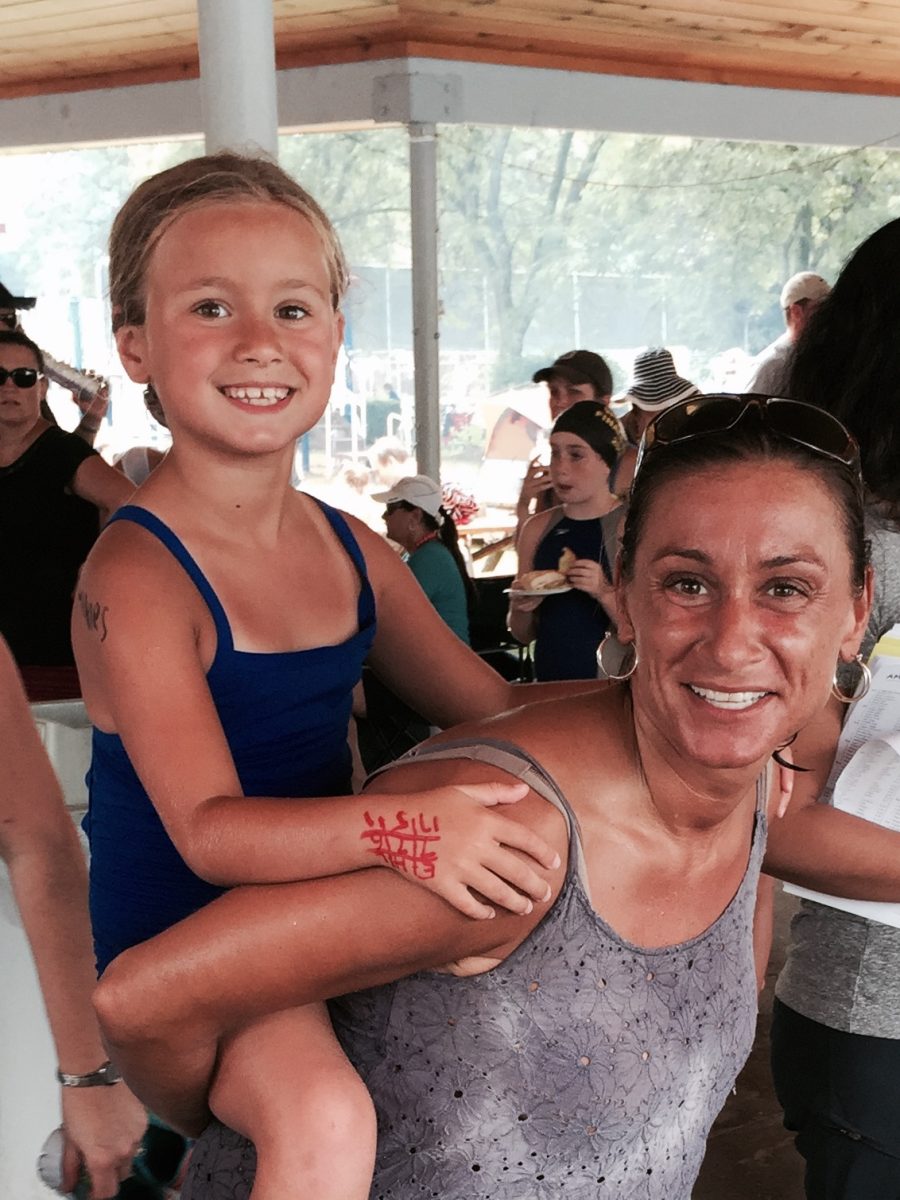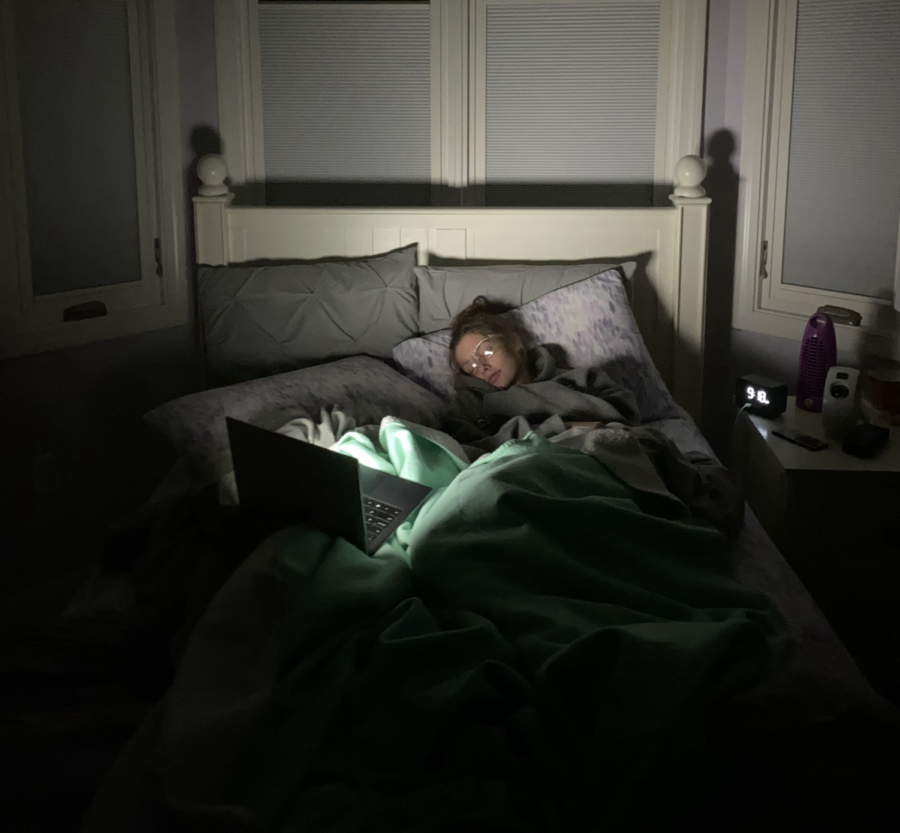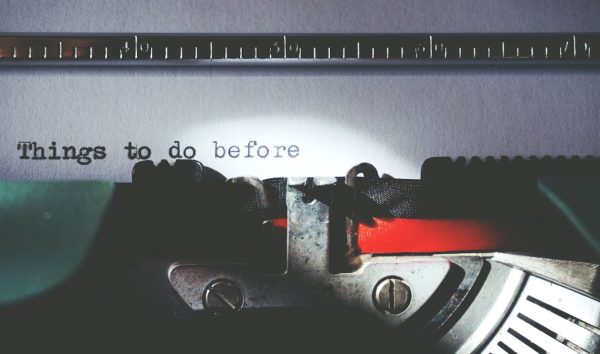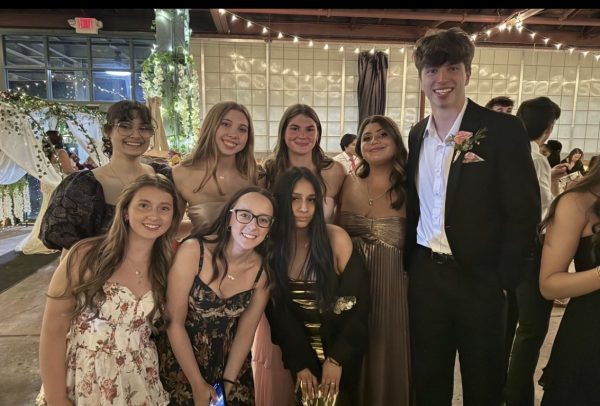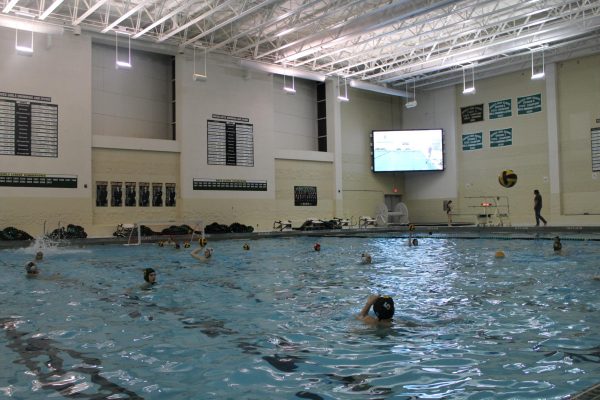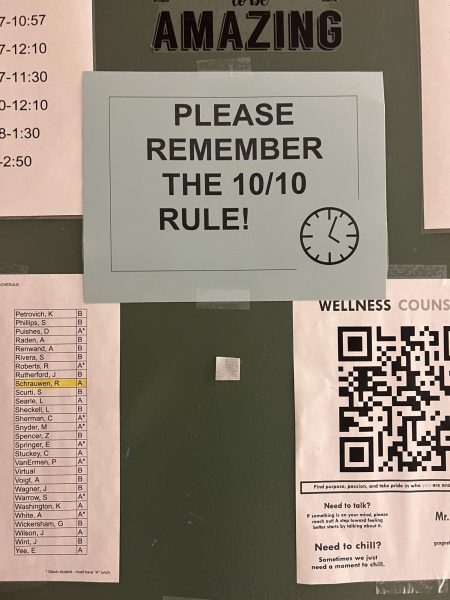How online school affected teenagers
Sophomore Adi Gerken barely manages to stay awake during her online Zoom’s classes. “It was hard to stay awake in class because I knew that I could sleep and the teacher wouldn’t know,” Gerken said. The action of falling asleep in class had become part of some kids’ daily routine. Paying attention in class became a chore.
Wake up. Join Zoom. Log off. Go to bed. An average Groves student’s day summed up last year. Teenagers in our community are struggling with the transition from Zoom back to in person this year; not just academically, but mentally too. The endless cycle engulfed students and made them feel like they would never return to school. The only connection most of us experienced was bad Wifi.
Students look back on the past year and think about COVID; it’s all students can think about with the social climate right now. With COVID-19 now having taken over 4.96 million lives, according to the New York Times, it’s hard to focus on anything else.
But our world has another global pandemic on the rise.
Mental Illness: especially among teens.
This deadly pandemic has been around for decades, and can’t be fixed with masks and vaccinations; similarly to COVID it’s turned into more than just a health issue, but a political one too. Mental health has been heavily stigmatized through the 20th century, and into the 21st, causing students to go undiagnosed.
Wellness Counselor Gregory Cognetto wants students to recognize their struggles and make students feel comfortable with talking about their mental health.
“If I could tell any student here, all of our students here, to just come by and sit down and have a talk because no one, including myself I realize, can carry our own mental health. And that’s not a knock on anyone, cause I’ll admit it I can’t deal with my mental health by myself, it’s inevitable,” Cognetto said.
Luckily, the suicide rates went down. However, according to the Suicide Prevention Resource Center published in July of 2021, depression and anxiety rates increased. This is after what scientists believe was a strong sense of community through people’s homes, as people felt connected and they thought they just would have a prolonged Spring Break. Yet, as two weeks turned into two months, and has now turned into two years, the pandemic continues with no end in sight. This raises concern that the suicide rates and mental health problems will rise.
As in-person school transitioned to online school at the beginning of the last school year, students had to make big adjustments. From classrooms to breakout rooms, nothing was the same. Students had their sports put on hold and with that their social lives. With conversations only being through a glass screen, it made it very difficult for students to feel connected. If students weren’t struggling already, they now were at the risk of beginning to.
Psychology teacher Laura Sheckell talks about the lack of connection that she experienced while teaching in last year´s Zoom period.
¨I would say though by the end of 2021, obviously the amount of cameras on, and the number of interactions was lower. I think if you really challenged students with breakout rooms or small group work you could get participation up, but it was hard, I think everyone was experiencing fatigue at that point,¨ Sheckell said.
It wasn’t just the students that were struggling, but teachers and administration too.
With breakout rooms being the only time students could speak up, you would assume that students would be ecstatic to talk to any one of their peers, and eagerly turn on their cameras and mics. However, this was the complete opposite for most students and their peers, leading to what some students call breakout room “horror stories”.
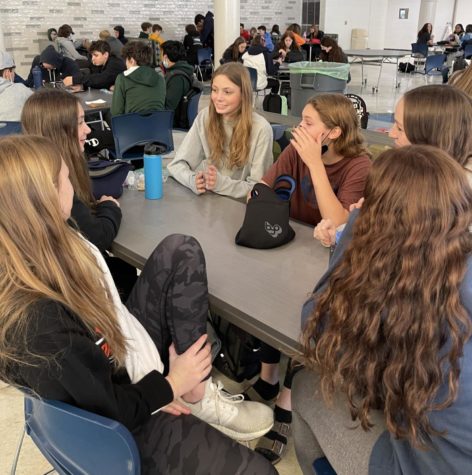
Sophomore Liz Cron, who has benefited from being back in person this year, couldn’t be happier with having her first full in person year at Groves this year. She shared one of her Zoom breakout room stories that students can relate to.
“We got this project, and you chose what you wanted to do, and then she just put you in a breakout room with other people that wanted to do that category. Nobody talked for ten minutes. I had even said, ‘Come on, let’s get started’. Nothing. So I was like okay. Ten minutes later still nobody was talking so I just did the project and shared it with them and we just kind of did it,” Cron said, experiencing disengagement and a new level of isolation from her peers.
Having to do projects on your own wasn’t something very far off for students in breakout rooms last year. Screens off, mouse hovering over the ‘leave meeting’ button. With one click you could escape from the awkward silence deafening through the screen. Now, as students have re-entered the in-person lifestyle, the awkwardness of group work hasn’t gone away.
With the longing for social connections again, you would assume the transition back to in-person would be the most smooth adjustment we’d all experienced over the past year. Again this was not the case. Students lost their social skills they had pre-COVID to the isolation of the pandemic.
Sophomore Alexis Heller, was someone who found the transition back to in-person more difficult than anticipated, even with all of the built-up excitement for the day she would see her friends again in person.
“I was a freshman, didn’t know anyone and there were all these barriers between how much you could talk to people. Like the plexiglass, and the social distancing, and all that,” Heller said, recalling the physical barriers that made it so difficult to re-engage with people in person: a new obstacle no one could have predicted.
Therapist Lisa LaSala, who works at her own private practice in Birmingham, knows the obstacles people have faced socially pre pandemic, has seen first hand what the social anxiety of being isolated for so long can do to high school students.
“Students became out of practice with socializing with peers and teachers. That resulted in a loss of confidence and increased worries about fitting in and having a sense of belonging,” LaSala said.
As if fitting in wasn’t already at the top of most teenagers’ to-do list, now the erratic obsession over how they are appearing to people rapidly increased. Checking yourself in your small Zoom window, where you appeared to your peers for the first time after months, the obsession with how others were perceiving you became too much, and caused students to just turn off their cameras.
Most people, along with having benefited mentally being back in person, have also benefited grade wise, and with an in school learning environment. Asking teachers questions over Zoom, where everyone could hear what you were asking; and not knowing if you were asking a “dumb question”, was a new source of anxiety no one anticipated. The distractions that everyone experienced in their own homes through the screen put students at a disadvantage for picking up new material. Rather than paying attention in class, students could now get away with sleeping during lessons, or doing other teacher’s classwork during another class. All of these distractions came without repercussions. Students would cheat on the online tests they were given, giving the false ideas to teachers that their material had been picked up. Now, with being back in person and without these cheat codes being available, students are struggling academically. Not having the ability to cheat made the anxiety of coming back to school stronger for some kids. Some students forgot how to study for in-person exams from the lack of practice over Zoom.
Students took shortcuts while in online school, by doing so, it didn’t only affect their grades, but also their peer’s grades in group projects. Recalling a group project that Heller had to do last year, she remembers how hard it was to reach out to people in her group because she no longer had an in-person outlet.
“I remember towards the end of the project my slides were done and two of the other peoples were done. The rest of the group members hadn’t finished there’s yet and barely did anything. Since it was a group project and you were graded the same we needed the rest to finish their slides, “ Heller said.
Heller is very invested in her grades, so finding out that other people in her group weren’t carrying their part of the project led her to do it for them.
“It was very stressful and annoying to have people in your group not doing the work when it affects everyone’s grade. Having some people in person and others not was hard because people used many excuses and it was harder to show the teacher who was doing work and who wasn’t. It made communication a lot more challenging and stressful,” Heller said.
While being on Zoom students had the ability to zone out and sleep during the majority of their classes. This excessive amount of sleep is an easy way to isolate yourself and fall into depression.
“Staying in your bedroom and in your bed is terrible for mental health because it is so isolating. People need interactions with others to feel connected, important, and like they have a place to belong,” LaSala said.
Students could now send themselves into a depressive episode, without having previous mental health histories; because they weren’t educated on how to keep themselves in a healthy mindset.
“Attachment releases endorphins which combat depression. Loneliness and isolation are major triggers for depression because the lack of connection and attachment to others is missing,” LaSala said.
Mental health specialists and administration at the school have noticed the toll that is being taken on students, especially the wellness counselor. Cognetto is someone who has dealt with the transition of back to in-person, like students have.
“I think now more than ever we really need to meet students where they’re at, provide them a space to talk about how they’re feeling, and when we know how they’re feeling, what we can do to support them and meet their needs,” Cognetto said.
As a big advocate for the mental health movement, Cognetto expressed his ideas for how to start the conversation on teenager’s mental health and destigmatize the conversation. Teacher’s concerns with student’s mental well-being have always been prevalent, but recently they’ve been heightened as the effects of the long isolation on teenagers’ minds are still unknown.
Some people could argue that mental health isn’t a prevalent issue in our society, but with about 49.5% of teenagers having mental disorders, and of that percentage 22.2% having severe impairment, according to the National Institute of Mental Health, this issue is very much present in our society. How Zoom affected these teenagers depended on the person.
“Zoom was helpful for some students and not too helpful for other students. Some students felt lonely, invisible and ignored with Zoom. It became easy for them to disengage and get lost. Those feelings can contribute to depression,” LaSala said.
The school system’s engagement in student’s mental health has only been a newly brought up to discussion for administration. With a lack of response on the topic being prevalent. Cognetto who is a strong advocate for the discussion of mental health and mental well-being in students, like most administration and teachers is thankful for the recent conversations on mental health in highschools.
“I think we need to really think about how we’re teaching, how we’re learning, and how we’re supporting students and making sure that we meet them where they’re at. For instance, if someone’s feeling anxious about school and we’re creating more school for them, then it’s only gonna make them more anxious, so we’re doing them a disservice,” Cognetto said.
Being a recent addition to Groves high school, he’s already on the path to further the mental health discussions.
“Provide them a space to talk about how they’re feeling, and when we know how they’re feeling, what we can do to support them and meet their needs,” Cognetto said.
There are many different options on how to tackle the stigmatized mental health discussion; while making students feel comfortable opening up to counselors, and mental health specialists.
Although, not everyone hated the time they spent on Zoom. Some students thrived under the at-home atmosphere and stress free school days. Sophomore Liz Cron, who prefers in-person learning over Zoom learning, still agrees with the statement that there were pros to the Zoom experience.
“Pros to being online was that first of all, you’re in the comfort of your own home, and a lot of the work might not have been as stressful because again you’re either in bed, or you’re in the comfort of your own home,” Cron said.
In contrast, sophomore Alexis Heller believes that there were no pros to being online.
“I personally learn better in-person through taking notes and getting to talk to the teacher. I like paper tests a lot more than online tests,” Heller said.
Heller’s stance proves that students’ opinion of in-person versus Zoom learning depends on the type of learner they are, and how they pick up information.
“Mental health professionals have been very busy helping children and teens get through various stressors related to the pandemic and resultant isolation and anxiety or depression,” LaSala said. Mental health specialists are dealing with an influx of clients at the moment, due to COVID.
Because some teenagers don’t have the resources to ask a therapist, it comes down to self-evaluating their own mental well-being and coping from there.
“If you’re feeling like you’re not in the best place, you’re not feeling centered, you’re tired, or you’re exhausted; it’s time to reach out to someone and ask for help. I think it’s important too, on your own, to put the phone away, put the schoolwork away, put everything away and just have a moment to reconnect with yourself; whether that’s through mindfulness, or just laying down, closing your eyes, and taking a breath,” Cognetto said.
After going through so many changes in the past two years, now students need all the support they can receive to survive in this “new normal”.
Your donation will support the student journalists of Wylie E. Groves High School. Your contribution will allow us to purchase equipment and cover our annual website hosting costs.
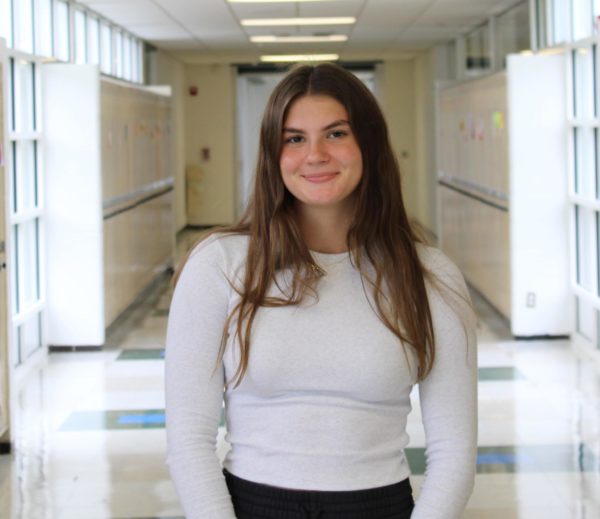
Alexis Auten is a senior at Groves and one of the current Editors-in-Chiefs(2023-2024). This is her third year writing for the Scriptor and she enjoys...
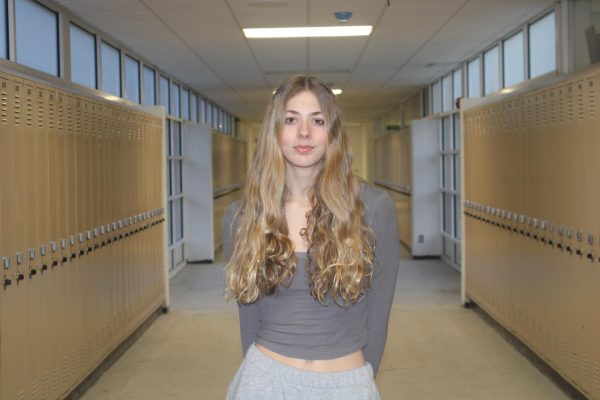
Mallory Gerken is a freshman at Groves High School. She is new to journalism and is looking forward to writing about topics she is passionate about while...





